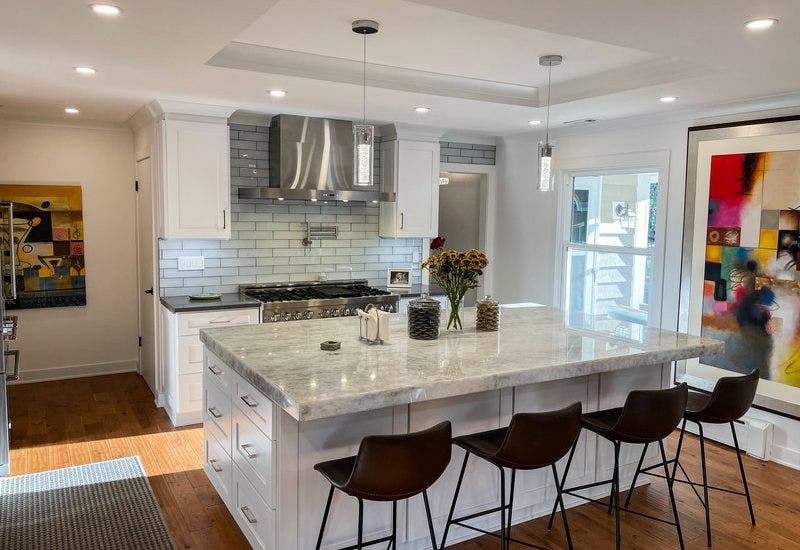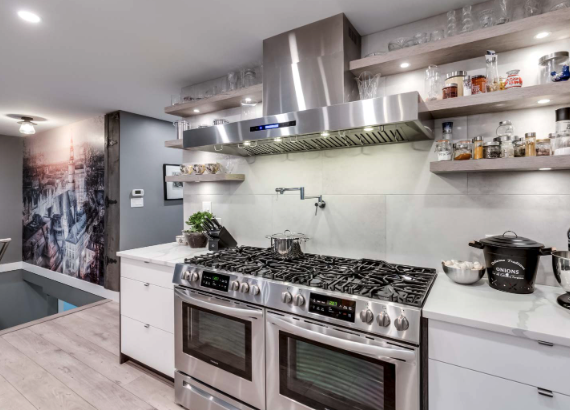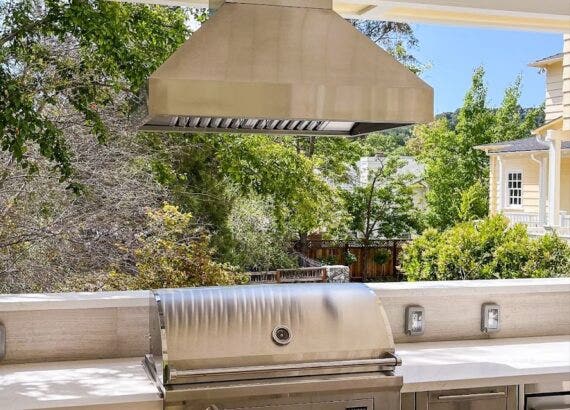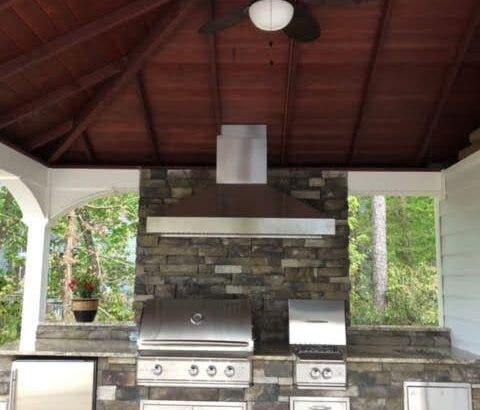What do I do if a stud is in the middle of my range hood?

There’s a lot to consider when installing your range hood. One of the most important things to watch out for is the positioning of studs in your wall or ceiling when planning where you are going to run your ductwork.
To vent your range hood successfully, you need room for your ductwork. You can’t have a stud blocking your duct run. But sometimes, mistakes happen.
If your range hood has a rotatable blower, you have two options. You can rotate the blower to vent horizontally out the wall and avoid a ceiling joist. Or you can rotate the blower to vent vertically and avoid a stud. If your range hood doesn’t have a rotatable blower, you’ll have to reposition the hood so you won’t hit any studs with your duct run.
Do not cut the stud out or remove part of the stud. That will compromise the structural integrity of your home which can be quite dangerous.
You can vent your range hood one of two ways. The vent can run horizontally through an interior wall.
Or you can vent your range hood duct vertically through the ceiling.
Note: Island hoods can only be vented through the ceiling. Be extra careful to avoid ceiling joists when deciding where to vent your hood.
It is crucial that you plan out your range hood installation before you install the hood. Make sure you know exactly where each stud is in your wall and if you have room to run duct to the outside.
Also, make sure that you can secure your range hood to at least one stud for additional support. Most homes space their studs 16 inches apart, but you’ll want to double check before you proceed with the installation.
Finding studs is easy. In fact, you don’t even need a stud finder. Check out the video below to learn more.
When mounting your hood, wall anchors can be used for additional support. Their size will vary depending on the wall material and the weight of the range hood being installed.
If you miss a stud when installing wall anchors, drill at least one screw through the back of the hood into a stud for additional support. We recommend supporting the hood with two to three screws.
Keep in mind that the positioning of the blower may vary depending on the range hood. Some may be in the middle while others may be on one side. Take this into account when planning your range hood installation. A stud cannot be in the way of the outlet on your range hood blower.
You won’t be able to return your hood once it’s installed. So, do not install your range hood until you’ve verified that you have room for ductwork. Otherwise you’ll have some costly repairs to do.
Running a duct is just one part of a range hood installation. If you want to learn how to mount a range hood, we have some helpful articles for you. Take a look at this post on how to install a wall hood or this post on how to install an island range hood.
For more information on best practices for ductwork, check out this article.
Thanks for reading. We hope you found out what you need to have a smooth range hood installation.







Comments are closed.